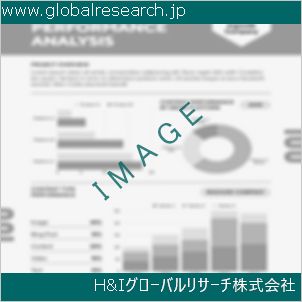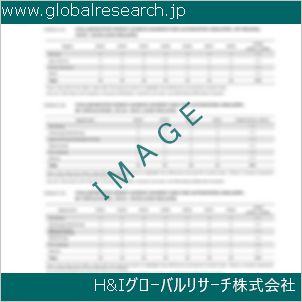Table of Contents
1 Industry Overview of Leadsilicate
1.1 Definition and Specifications of Leadsilicate
1.1.1 Definition of Leadsilicate
1.1.2 Specifications of Leadsilicate
1.2 Classification of Leadsilicate
1.3 Applications of Leadsilicate
1.3.1 Nuclear Application
1.3.2 Non-Nuclear Application
1.4 Industry Chain Structure of Leadsilicate
1.5 Industry Overview and Major Regions Status of Leadsilicate
1.5.1 Industry Overview of Leadsilicate
1.5.2 Global Major Regions Status of Leadsilicate
1.6 Industry Policy Analysis of Leadsilicate
1.7 Industry News Analysis of Leadsilicate
2 Manufacturing Cost Structure Analysis of Leadsilicate
2.1 Raw Material Suppliers and Price Analysis of Leadsilicate
2.2 Equipment Suppliers and Price Analysis of Leadsilicate
2.3 Labor Cost Analysis of Leadsilicate
2.4 Other Costs Analysis of Leadsilicate
2.5 Manufacturing Cost Structure Analysis of Leadsilicate
2.6 Manufacturing Process Analysis of Leadsilicate
3 Technical Data and Manufacturing Plants Analysis of Leadsilicate
3.1 Capacity and Commercial Production Date of Global Leadsilicate Major Manufacturers in 2023
3.2 Manufacturing Plants Distribution of Global Leadsilicate Major Manufacturers in 2023
3.3 R&D Status and Technology Source of Global Leadsilicate Major Manufacturers in 2023
3.4 Raw Materials Sources Analysis of Global Leadsilicate Major Manufacturers in 2023
4 Capacity, Production and Revenue Analysis of Leadsilicate by Regions, Types and Manufacturers
4.1 Global Capacity, Production and Revenue of Leadsilicate by Regions 2019-2024
4.2 Global and Major Regions Capacity, Production, Revenue and Growth Rate of Leadsilicate 2019-2024
4.3 Global Capacity, Production and Revenue of Leadsilicate by Types 2019-2024
4.4 Global Capacity, Production and Revenue of Leadsilicate by Manufacturers 2019-2024
5 Price, Cost, Gross and Gross Margin Analysis of Leadsilicate by Regions, Types and Manufacturers
5.1 Price, Cost, Gross and Gross Margin Analysis of Leadsilicate by Regions 2019-2024
5.2 Price, Cost, Gross and Gross Margin Analysis of Leadsilicate by Types 2019-2024
5.3 Price, Cost, Gross and Gross Margin Analysis of Leadsilicate by Manufacturers 2019-2024
6 Consumption Volume, Consumption Value and Sale Price Analysis of Leadsilicate by Regions, Types and Applications
6.1 Global Consumption Volume and Consumption Value of Leadsilicate by Regions 2019-2024
6.2 Global and Major Regions Consumption Volume, Consumption Value and Growth Rate of Leadsilicate 2019-2024
6.3 Global Consumption Volume and Consumption Value of Leadsilicate by Types 2019-2024
6.4 Global Consumption Volume and Consumption Value of Leadsilicate by Applications 2019-2024
6.5 Sale Price of Leadsilicate by Regions 2019-2024
6.6 Sale Price of Leadsilicate by Types 2019-2024
6.7 Sale Price of Leadsilicate by Applications 2019-2024
6.8 Market Share Analysis of Leadsilicate by Different Sale Price Levels
7 Supply, Import, Export and Consumption Analysis of Leadsilicate
7.1 Supply, Consumption and Gap of Leadsilicate 2019-2024
7.2 Global Capacity, Production, Price, Cost, Revenue, Supply, Import, Export and Consumption of Leadsilicate 2019-2024
7.3 USA Capacity, Production, Price, Cost, Revenue, Supply, Import, Export and Consumption of Leadsilicate 2019-2024
7.4 EU Capacity, Production, Price, Cost, Revenue, Supply, Import, Export and Consumption of Leadsilicate 2019-2024
7.5 China Capacity, Production, Price, Cost, Revenue, Supply, Import, Export and Consumption of Leadsilicate 2019-2024
7.6 Japan Capacity, Production, Price, Cost, Revenue, Supply, Import, Export and Consumption of Leadsilicate 2019-2024
8 Major Manufacturers Analysis of Leadsilicate
8.1 Manufacturer One
8.1.1 Company Profile
8.1.2 Product Picture and Specifications
8.1.2.1 Type I
8.1.2.2 Type II
8.1.2.3 Type III
8.1.3 Capacity, Production, Price, Cost, Gross and Revenue
8.1.4 Contact Information
8.2 Manufacturer Two
8.2.1 Company Profile
8.2.2 Product Picture and Specifications
8.2.2.1 Type I
8.2.2.2 Type II
8.2.2.3 Type III
8.2.3 Capacity, Production, Price, Cost, Gross and Revenue
8.2.4 Contact Information
8.3 Manufacturer Three
8.3.1 Company Profile
8.3.2 Product Picture and Specifications
8.3.2.1 Type I
8.3.2.2 Type II
8.3.2.3 Type III
8.3.3 Capacity, Production, Price, Cost, Gross and Revenue
8.3.4 Contact Information
8.4 Manufacturer Four
8.4.1 Company Profile
8.4.2 Product Picture and Specifications
8.4.2.1 Type I
8.4.2.2 Type II
8.4.2.3 Type III
8.4.3 Capacity, Production, Price, Cost, Gross and Revenue
8.4.4 Contact Information
8.5 Manufacturer Five
8.5.1 Company Profile
8.5.2 Product Picture and Specifications
8.5.2.1 Type I
8.5.2.2 Type II
8.5.2.3 Type III
8.5.3 Capacity, Production, Price, Cost, Gross and Revenue
8.5.4 Contact Information
…
9 Marketing Trader or Distributor Analysis of Leadsilicate
9.1 Marketing Channels Status of Leadsilicate
9.2 Traders or Distributors with Contact Information of Leadsilicate by Regions
9.3 Ex-work Price, Channel Price and End Buyer Price Analysis of Leadsilicate
9.4 Regional Import, Export and Trade Analysis of Leadsilicate
10 Industry Chain Analysis of Leadsilicate
10.1 Upstream Major Raw Materials Suppliers Analysis of Leadsilicate
10.1.1 Major Raw Materials Suppliers with Contact Information Analysis of Leadsilicate
10.1.2 Major Raw Materials Suppliers with Supply Volume Analysis of Leadsilicate by Regions
10.2 Upstream Major Equipment Suppliers Analysis of Leadsilicate
10.2.1 Major Equipment Suppliers with Contact Information Analysis of Leadsilicate
10.2.2 Major Equipment Suppliers with Product Pictures Analysis of Leadsilicate by Regions
10.3 Downstream Major Consumers Analysis of Leadsilicate
10.3.1 Major Consumers with Contact Information Analysis of Leadsilicate
10.3.2 Major Consumers with Consumption Volume Analysis of Leadsilicate by Regions
10.4 Supply Chain Relationship Analysis of Leadsilicate
11 Development Trend of Analysis of Leadsilicate
11.1 Capacity, Production and Revenue Forecast of Leadsilicate by Regions and Types
11.1.1 Global Capacity, Production and Revenue of Leadsilicate by Regions 2024-2029
11.1.2 Global and Major Regions Capacity, Production, Revenue and Growth Rate of Leadsilicate 2024-2029
11.1.3 Global Capacity, Production and Revenue of Leadsilicate by Types 2024-2029
11.2 Consumption Volume and Consumption Value Forecast of Leadsilicate by Regions, Types and Applications
11.2.1 Global Consumption Volume and Consumption Value of Leadsilicate by Regions 2024-2029
11.2.2 Global and Major Regions Consumption Volume, Consumption Value and Growth Rate of Leadsilicate 2024-2029
11.2.3 Global Consumption Volume and Consumption Value of Leadsilicate by Types 2024-2029
11.2.4 Global Consumption Volume and Consumption Value of Leadsilicate by Applications 2024-2029
11.3 Supply, Import, Export and Consumption Forecast of Leadsilicate
11.3.1 Supply, Consumption and Gap of Leadsilicate 2024-2029
11.3.2 Global Capacity, Production, Price, Cost, Revenue, Supply, Import, Export and Consumption of Leadsilicate 2024-2029
11.3.3 USA Capacity, Production, Price, Cost, Revenue, Supply, Import, Export and Consumption of Leadsilicate 2024-2029
11.3.4 EU Capacity, Production, Price, Cost, Revenue, Supply, Import, Export and Consumption of Leadsilicate 2024-2029
11.3.5 China Capacity, Production, Price, Cost, Revenue, Supply, Import, Export and Consumption of Leadsilicate 2024-2029
11.3.6 Japan Capacity, Production, Price, Cost, Revenue, Supply, Import, Export and Consumption of Leadsilicate 2024-2029
12 New Project Investment Feasibility Analysis of Leadsilicate
12.1 New Project SWOT Analysis of Leadsilicate
12.2 New Project Investment Feasibility Analysis of Leadsilicate
13 Conclusion of the Global Leadsilicate (CAS 10099-76-0) Industry 2024 Market Research Report
| ※参考情報 ケイ酸鉛(Lead Silicate)は、化学式で表される無機化合物であり、CAS登録番号は10099-76-0です。ケイ酸鉛は、鉛とケイ素の酸化物から構成されており、主にガラス製品やセラミック材料の製造に利用されています。この物質は、その特異な特性と用途において重要な役割を果たしています。 ケイ酸鉛は、鉛(Pb)とケイ酸(SiO₂)の結合により形成されるため、鉛を含む他の無機化合物と比べて特有の性質を持っています。一般的に、ケイ酸鉛は無色または淡黄色の固体であり、透明度が高く、光学的特性に優れています。この特性から、光学機器や装飾品、さらには高品質なガラス製品の原材料として利用されます。 ケイ酸鉛にはいくつかの異なる種類があり、これらは主に成分や製造プロセスによって分類されます。一般的なケイ酸鉛の形式は、鉛の含有量によって異なる特性を持つため、製品の目的に応じて適切な種類を選択することが重要です。これにより、物理的および化学的特性が異なるケイ酸鉛が得られます。 ケイ酸鉛の主要な用途は、ガラス産業における利用です。特に、光学ガラスや装飾用ガラス、さらに電子機器の部品などに幅広く使用されています。これらの用途においては、透明度や屈折率、そして耐久性が求められます。そのため、ケイ酸鉛の持つ優れた光学特性が活用されています。また、セラミック材料の分野でも、ケイ酸鉛は重要な役割を果たしており、特に高温での性能が求められる用途において重宝されています。 関連する技術においては、ケイ酸鉛の製造プロセスや応用技術が進化しています。特にガラス製造においては、従来の成分に加え、エコロジーや人体への影響を考慮した新しい技術が注目されています。例えば、鉛の使用量を削減することで環境負荷を軽減する技術や、代替材料を用いた製造方法があります。これにより、ケイ酸鉛を用いた製品がより持続可能で安全なものとなるよう努められています。 さらに、ケイ酸鉛の特性を最大限に生かすための研究も進んでいます。特に、光学特性や熱的特性を向上させるための添加物や製造条件の最適化が行われています。これによって、より高性能な材料としての可能性が広がっています。 ただし、ケイ酸鉛にはいくつかの注意点も存在します。鉛は有害な物質であるため、取り扱いには十分な注意が必要です。特に、鉛を含む製品が身体に及ぼす影響についての研究が進んでいるため、使用する際には安全基準に従った管理が求められます。近年では、鉛の使用を制限する法律や規制も強化されており、これが産業界に与える影響も無視できません。 全体として、ケイ酸鉛は非常に多用途で特異な特性を持つ材料であり、ガラスやセラミック、電子機器の分野において欠かせない存在であります。今後も、技術の進歩に伴い、より安全で持続可能な形での利用が進められていくことでしょう。ケイ酸鉛の研究と技術開発は、現代の材料科学や工業生産において重要な位置を占めており、その可能性は広がり続けています。 |
❖ 免責事項 ❖
http://www.globalresearch.jp/disclaimer












